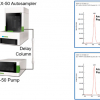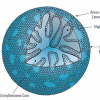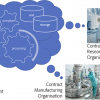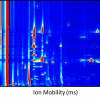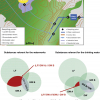Articles
LC/MS/MS analysis of PFAS at ultra-trace levels requires mitigation to both liquid chromatograph and mass spectrometer to eliminate the leaching of fluorochemicals from components within the systems. Manual SPE configurations also require mitigative steps to eliminate any components constructed of PTFE to minimise or eliminate any PFAS contamination.
For the separation of ionic species, ion chromatography (IC), a type of liquid chromatography, is the method of choice. The most critical component of this technique is the separation column, which is selected based on factors that include the specific analytes of interest, the sample type and the required detection levels. This article outlines the column parameters that impact the separation of charged species in solution using ion-exchange chromatography and the developments that have continued to redefine what is possible with an IC system.
This work demonstrates the determination of inorganic anions in drinking water by ion chromatography.
Tony Davies and Mohan Cashyap discuss this topic with help from a number of industry experts. Whilst there are undoubted computing and networking issues for regulated industries in allowing working from home as if the user was in the lab, they are not insurmountable.
The authors offer many useful points to consider when using pre-processing techniques.
Tony Davies and Roy Goodacre raise some issues around the reliance just on vast quantities of data collection in omics experiments. As they put it, should we “just keep throwing the mass spectra, nuclear magnetic resonance data sets and our ion mobility fingerprints onto a big pile for the statisticians to fight over?”.
This article provides a valuable summary of the choice of sample clean-up methods available for the quantification of small molecules in body fluids. What are the key factors? Judy outlines the principal processing methods and provides practical advice on protocol development using quantification of serum testosterone in serum samples as the model compound.
Monitoring drinking water quality poses many challenges and the authors describe their approach that combines instrumental developments with new software.
The authors report on an analytical technique based on the combination of attenuated total reflection infrared (ATR-IR) spectroscopy and modulation excitation (ME), which enables the investigation of the interactions leading to separation at the selectand—selector interface.
Lutz Hartiga and Kristin von Czapiewskib
aEurofins, Wiertz-Eggert-Jörissen GmbH, Stenzelring 14b, 21107 Hamburg, Germany
bApplied Biosystems, Applera Deutschland GmbH, Franfurter Straße 129 B, 64293 Darmstadt, Germany
Steve Down
HD Science Limited, 16 Petworth Avenue, Toton, Nottingham NG9 6JF, UK

